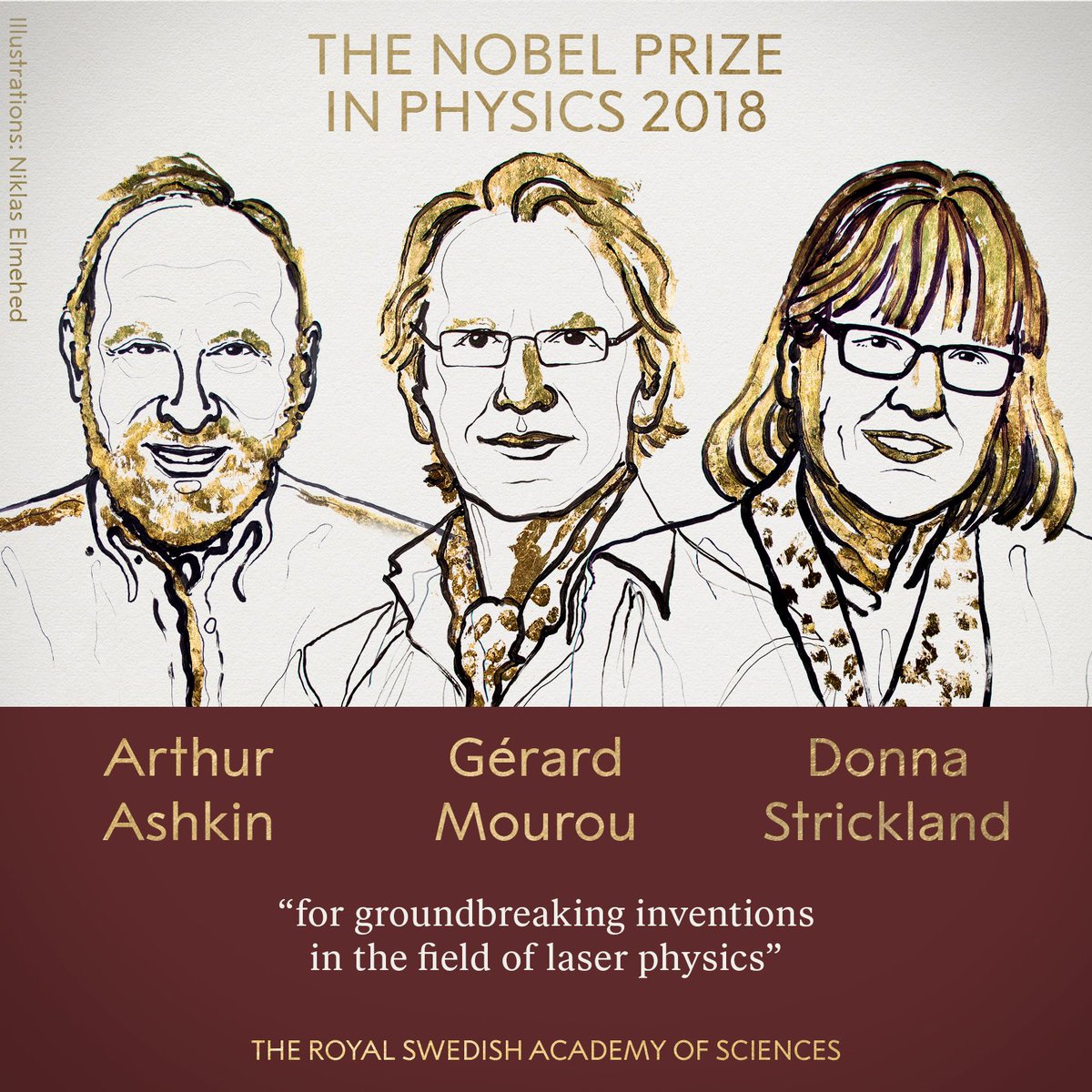Ashkin, Mourou, and Strickland share 2018 Nobel Prize in Physics
The physicists are honored for developing techniques that enable the precise control of laser light for research, manufacturing, and medical purposes.
 The 2018 Nobel Prize in physics was awarded Tuesday to Arthur Ashkin, Gérard Mourou and Donna Strickland for their pioneering work to turn lasers into powerful tools. Ashkin, a researcher at Bell Laboratories in New Jersey, invented “optical tweezers” — focused beams of light that can be used to grab particles, atoms and even living cells and are now widely used to study the machinery of life. Mourou, of École Polytechnique in France and the University of Michigan, and Strickland, of the University of Waterloo in Canada, “paved the way” for the most intense laser beams ever created by humans via a technique that stretches and then amplifies the light beam. “Billions of people make daily use of optical disk drive, laser printers and optical scanners ... millions undergo laser surgery,” said Nobel committee member Olga Botner. “The laser is truly one of the many examples of how a so-called blue sky discovery in a fundamental science eventually may transform our daily lives.”
The 2018 Nobel Prize in physics was awarded Tuesday to Arthur Ashkin, Gérard Mourou and Donna Strickland for their pioneering work to turn lasers into powerful tools. Ashkin, a researcher at Bell Laboratories in New Jersey, invented “optical tweezers” — focused beams of light that can be used to grab particles, atoms and even living cells and are now widely used to study the machinery of life. Mourou, of École Polytechnique in France and the University of Michigan, and Strickland, of the University of Waterloo in Canada, “paved the way” for the most intense laser beams ever created by humans via a technique that stretches and then amplifies the light beam. “Billions of people make daily use of optical disk drive, laser printers and optical scanners ... millions undergo laser surgery,” said Nobel committee member Olga Botner. “The laser is truly one of the many examples of how a so-called blue sky discovery in a fundamental science eventually may transform our daily lives.”









Post a Comment